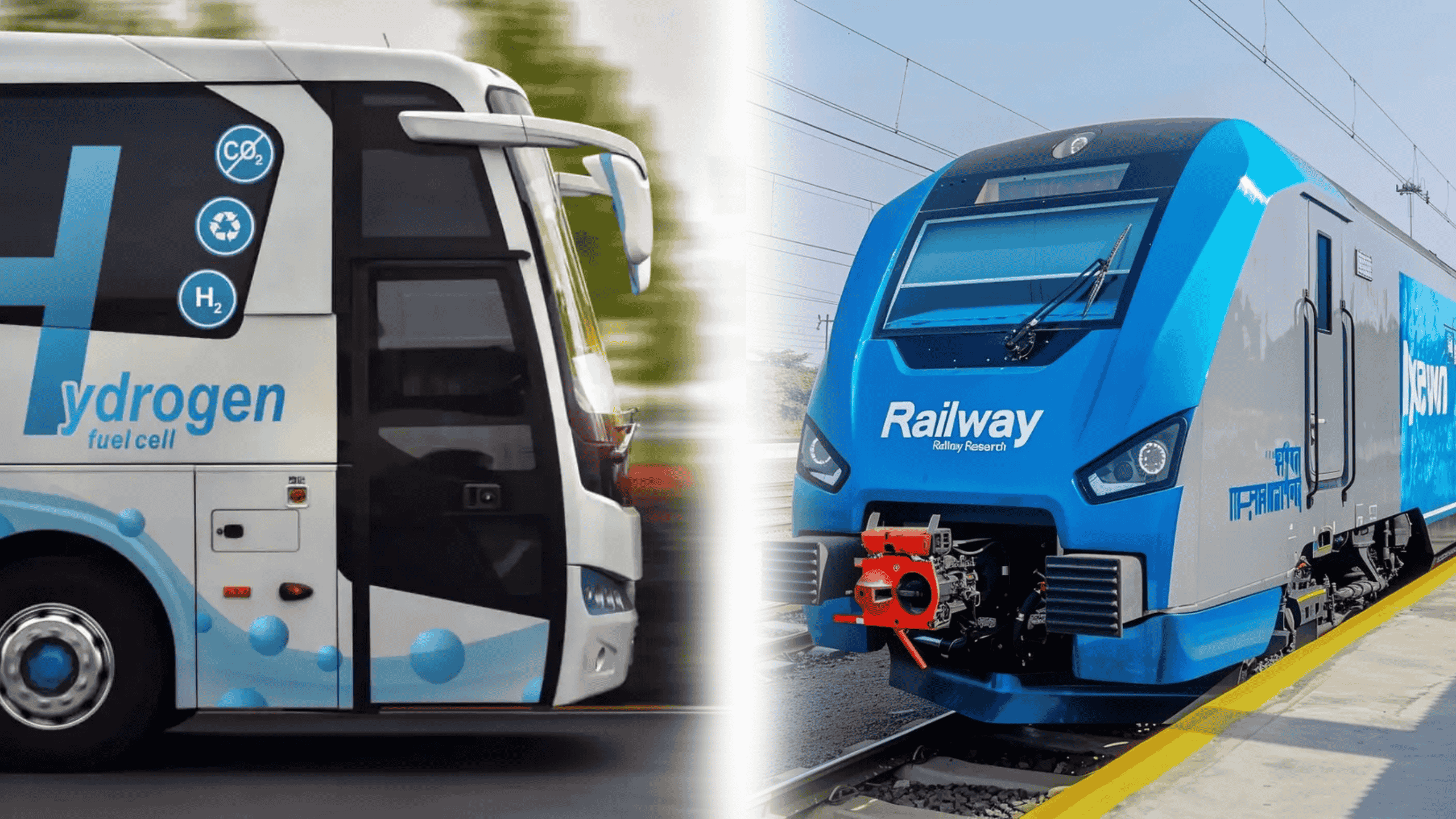Hydrogen Fuel Cells: A Crucial Link in India’s Green Transport Revolution
India is witnessing a rapid transformation towards green mobility. Recently, the country’s first hydrogen-powered truck was deployed for mining logistics in Chhattisgarh, giving a major boost to India’s sustainable transport mission. The MoU between Indian Oil and Hyundai Motor India for exploring large-scale adoption of hydrogen fuel cell vehicles (HFCVs), and Indian Railways’ plan for hydrogen-powered trains, further strengthen this transition.
This article, tailored for UPSC, SSC, and Banking exam aspirants, explains hydrogen fuel cell technology, its advantages, challenges, and key government policies in detail.
(Atharva Examwise blog | competitive exam blog | UPSC preparation tips | SSC strategy | banking exam insights)
How Do Hydrogen Fuel Cells Work?
A hydrogen fuel cell is an electrochemical device that generates electricity through a reaction between hydrogen and oxygen. The only byproduct is water (H₂O), making it a clean and efficient energy solution.
Working Principle
Anode Side: Hydrogen gas (H₂) is introduced at the anode, where it splits into protons (H⁺) and electrons (e⁻).
Electrolyte: Protons pass through the electrolyte membrane, while electrons travel via an external circuit, creating an electric current.
Cathode Side: Oxygen (O₂) from the air is supplied to the cathode, where it combines with protons and electrons to form water.
This process occurs without combustion, resulting in only water vapor as emission and no harmful pollutants.
Key Advantages of Hydrogen Fuel Cell Vehicles
Zero Emissions: Only water vapor is emitted, making these vehicles environmentally friendly.
High Energy Density: Hydrogen has three times the energy density of conventional fuels.
Fast Refueling: Hydrogen tanks can be refilled in minutes, similar to petrol or diesel vehicles.
Long Driving Range: High energy-to-weight ratio allows for long-distance travel without bulky fuel storage.
Quiet Operation: Electric motors ensure very low noise levels during operation.
Challenges Facing Hydrogen Fuel Cell Vehicles
Limited Infrastructure: There are very few hydrogen refueling stations in India, restricting operational feasibility.
High Costs: Production, compression, and storage of hydrogen are expensive, especially via sustainable methods.
High Initial Investment: The cost of vehicles and supporting infrastructure is higher than battery electric vehicles.
Material Costs: Materials used in fuel cell manufacturing are costly.
Safety Concerns: Public apprehension about hydrogen’s flammability can slow adoption, despite strict safety measures.
The Importance of Green Hydrogen
For truly clean transportation, the source of hydrogen must also be sustainable.
Green Hydrogen: Produced via electrolysis of water using renewable energy, resulting in nearly zero GHG emissions.
Other Types: Grey, blue, and brown hydrogen-produced from fossil fuels-emit varying levels of carbon and are not considered sustainable.
States like Maharashtra, Gujarat, Kerala, Tamil Nadu, and Rajasthan are already initiating green hydrogen production projects.
Government Initiatives and Missions
National Green Hydrogen Mission (NGHM)
Launched in 2023, aiming for energy independence by 2047 and net zero by 2070.
Target: Production capacity of 5 million metric tons of green hydrogen per year.
Special focus on heavy-duty, long-distance transport (e.g., trucks, buses).
Hydrogen Highways: Establishing hydrogen refueling stations and production centers along interstate routes.
Hydrogen Valley Innovation Cluster (HVIC): Developing clusters in various states to create integrated hydrogen ecosystems.
Pilot Projects
37 vehicles (buses/trucks) and 9 refueling stations are being deployed on 10 major routes.
Industry leaders like Indian Oil, Hyundai, Tata Motors, and Adani Group are participating in this transformation.
The Future of Hydrogen Fuel Cells in India
Technological Advancement: Investment in R&D will reduce costs and improve durability.
Policy Support: Subsidies, tax benefits, and incentives for clean vehicle adoption.
Infrastructure Expansion: The ‘hydrogen highway’ and cluster-based approach are building a nationwide network.
Why Is This Topic Important for Competitive Exam Preparation?
(Atharva Examwise blog | competitive exam blog | UPSC preparation tips | SSC strategy | banking exam insights)
Key Takeaways for Exam Preparation
Science & Technology Section: Working, benefits, and challenges of hydrogen fuel cells are crucial for UPSC, SSC, Banking, and other exams.
Environment & Sustainable Development: Questions on green hydrogen, carbon emission reduction, and India’s net zero goals are likely.
Economic & Industrial Policies: National Green Hydrogen Mission, government initiatives, and public-private partnerships are relevant for current affairs.
Case Studies: Examples from states like Chhattisgarh, Maharashtra, and Gujarat are useful for answer writing.
Interdisciplinary Linkages: This topic connects science, environment, economy, and policy-important for holistic preparation.
Tips for Aspirants:
Stay updated on the latest developments in hydrogen fuel cells and green hydrogen.
Remember the names, objectives, and state examples of government schemes, missions, and pilot projects.
Use data, examples, and cluster-based initiatives in your answers.
Stay tuned to Atharva Examwise blog for more such important topics-your partner in competitive exam success!








